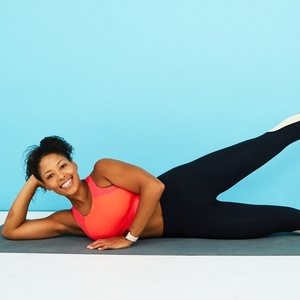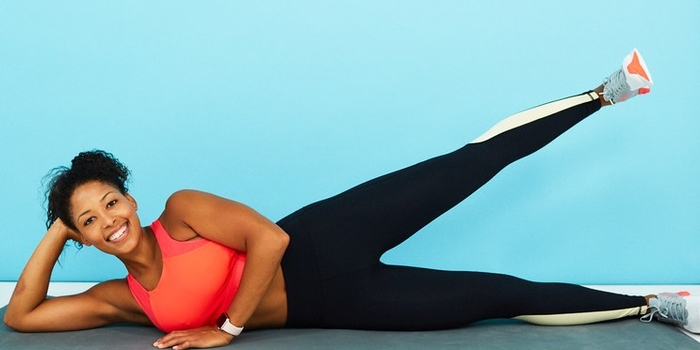The 10-Min Body-Weight Workout Every Runner Needs
![]()
September 6, 2017
If you’re training for a fall race, you're probably (hopefully) already being diligent and squeezing in strength workouts to your already-packed training schedule. All those squats, lunges, and leg presses are getting you stronger, so way to go. But are they also slashing your risk of getting hurt?
Unfortunately, if you’re working only your big muscles (read: quads and glutes), which most popular weight-room moves do, probably not as much as you'd hope. The good news: The fix is a simple, no-equipment routine that you can knock out anywhere in no time flat. It’s called the Myrtl routine, created by Jay Johnson, a running coach and director of Boulder Running Camps in Colorado—and it’s a secret weapon of running coaches and physical therapists.
The routine, which only takes about 10 minutes to bust out, is made up of simple bodyweight moves that seem a little reminiscent of an '80s sculpting class—think leg lifts, leg circles, and fire hydrants. The exercises may seem too simple to be effective. But they target the smaller, stabilizing muscles around your hip girdle that are crucial to support you while running, especially when you’re getting tired during the late stages of a marathon or other endurance event.
“Maintaining muscular strength in the pelvis and hip region is essential for overall muscular balance, and it supports the core and spine—which is extremely important for marathoners or runners who do long distances,” Elizabeth Matzkin, M.D., chief of Women’s Sports Medicine at Brigham and Women’s Hospital in Boston, tells SELF. Strong hip flexors (the muscles that run along the front of your hips) and smaller glute muscles (the gluteus medius and minimus) help your body absorb the impact from pounding the pavement, plus help you stay stable and maintain good posture and proper form. That’s key, says Matzkin, because when your form starts to go as you get tired during a run, the force of impact winds up getting placed on the wrong points of your muscles, tendons, and joints—which can land you with an injury.
Lunges and squats hit these stabilizing muscles too, but they focus more on the bigger muscles. Plus, says Matzkin, “For many runners or athletes, lunges and squats can exacerbate anterior knee pain.” Myrtl moves, on the other hand, give your knees a little break. (Ideally, she says, you should have both the big-muscle moves and exercises targeting smaller muscles in the mix.)
It’s not all about getting strong for the start line, though. “Myrtl is also neuromuscular activation for the muscles of the hip girdle and promotes hip mobility and greater range of motion, which repetitive running can diminish,” says Ray Camano, a Full Throttle Endurance coach at Sports Center at Chelsea Piers in New York City. “Muscular imbalances and immobility can lead to knee pain and all kinds of injury down the chain.”
Camano recommends adding Myrtl to your schedule at least three times a week but ideally before every single run or bike ride. Add it to your dynamic warm-up or squeeze it in as part of your pre-stretching cooldown, and alternate other weight training on days in between.
Your hips (and knees and IT bands) will thank you.

